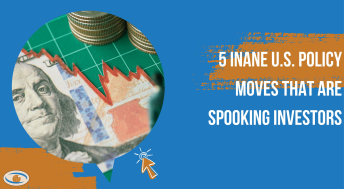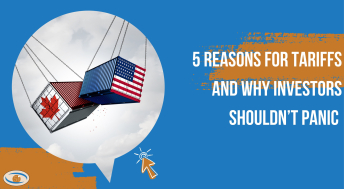With another quarter of Chart Attack sent to inboxes (you can sign up to download your copy of Chart Attack here), we want to take some time to highlight some charts that jump out at us compared to the prior quarter.
Ivey PMI - Canada
The Ivey PMI is an abbreviation for the Ivey Purchasing Managers Index. This index indicates whether purchasing managers see the manufacturing and services sectors as expanding or contracting. It is often seen as a leading indicator of the future direction of the broader economy since purchase orders by manufacturers lead to consumer activity. Generally, a reading above 50 is seen as leading an economic expansion and below 50 is economic contraction. We can see the latest reading is above 60, indicating that the economic recovery is well underway, and purchase orders are increasing.
Canada Headline CPI
Headline CPI includes all inflationary measures whereas the Core CPI excludes more volatile constituents such as food and energy. Both headline and core CPI have been making new highs as the economy is gaining momentum and supply chain issues are squeezing certain commodity prices higher.
Much of the existing fears in the market are centered around higher inflation prints, and if we begin to see the inflation numbers rollover that would signal some very positive signs for the financial markets. We don’t believe that inflation will get out of hand and run away from us into a hyperinflationary territory, but we are living in extraordinary times and much of this increased inflation is a result of supply chain issues. For inflation to remain sustained at this level for the next year or more, that would require supply chain issues to persist and almost all commodity prices to remain elevated, and we do not believe that is a likely outcome.
Commodity Indices
Commodities are often referred to as being cyclical in nature, and this pattern of cyclicality can be seen in the price increases throughout 2021. Gold, copper, and oil have all witnessed large price increases from the lows of March 2020. These increases are partially explainable by supply chain disruptions due to the pandemic, and due to increased demand for goods throughout the pandemic. We will continue to monitor these prices as we enter Q4 of 2021. The overall trend that these commodity prices have exhibited over the last 20 years is very much correlated to the CPI inflation chart. This notion of commodity prices being cyclical relates back to our thesis that inflation is unlikely to remain sustained at these elevated levels.
Twelve-Month Forward P/E Ratios and Average P/E
This chart looks at the different forward P/E ratios for several different countries. The forward P/E ratio is a measure of how expensive each countries stock market will be using next year's earnings estimates. Since a stock’s price should essentially reflect its future earnings, looking at the forward P/E ratio is a good method to measure the expensiveness of a stock today. Focusing mostly on Canada and the US, we can see that most recently, their forward P/E ratios have been coming down. From what we know, the actual prices of the stock markets in Canada and the US have been increasing since 2021, but yet their forward P/E ratios are declining. This signals to us that stock prices are becoming more reasonable as higher future earnings growth is anticipated.
Research for Today, Invest for Tomorrow.







Comments
Login to post a comment.